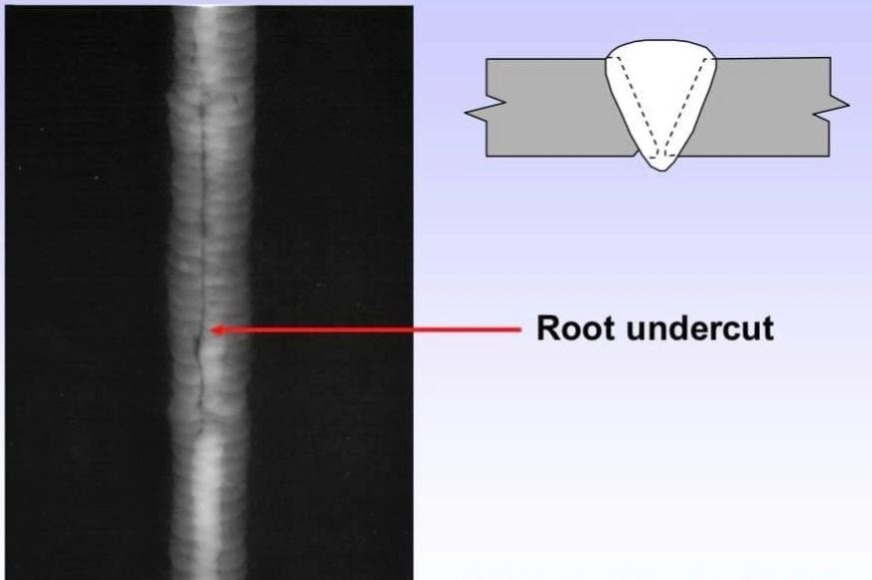Preventing Weld Undercut Demystified: Methods for Success
Preventing Weld Undercut Demystified: Methods for Success
Blog Article
Grasping the Art of Welding: How to Avoid Undercut Welding Issues for Flawless Manufacture Results
By comprehending the origin creates of undercut welding and applying reliable strategies to stop it, welders can boost their craft to brand-new degrees of quality. In the pursuit of perfect construction outcomes, understanding the art of welding to avoid undercut problems is not simply an ability yet a necessity for those making every effort for perfection in their work.
Understanding Undercut Welding

To prevent undercut welding, welders should make sure correct welding parameters, such as changing the existing, voltage, traveling rate, and preserving the proper electrode angle. By comprehending the reasons of undercut welding and executing preventive steps, welders can accomplish high-quality, structurally sound welds.
Root Causes Of Undercut in Welding
Recognizing the variables that add to undercut in welding is necessary for welders to create premium, structurally sound welds. Undercutting occurs when the weld metal does not appropriately fill up the groove formed between the base steel and the formerly transferred weld steel. Numerous variables can lead to damage in welding. One typical cause is too much warm input. Welding at heats for extensive durations can result in the base steel melting more than wanted, leading to damage. Insufficient welding inaccurate or current welding speed can also add to damage. Insufficient current may not provide adequate warm to thaw the base and filler metals sufficiently, while too much rate can prevent correct fusion, creating undercut. Furthermore, incorrect electrode angles or incorrect lantern manipulation strategies can create locations of reduced weld metal deposition, advertising undercut. Understanding these reasons and implementing appropriate welding methods can help protect against undercutting concerns, guaranteeing solid and long lasting welds.
Techniques to avoid Undercutting

To reduce the danger of damaging in welding, welders can use critical welding techniques targeted at improving the top quality and honesty of the weld joints. One reliable technique is to readjust the welding criteria, such as voltage, existing, and take a trip rate, to ensure appropriate warmth input and deposition. Keeping an ideal electrode angle and ensuring regular traveling speed can additionally aid protect against undercut. In addition, making use of the review proper welding strategy for the specific joint configuration, such as weave or stringer beads, can add to reducing damaging. Preventing weld undercut.
Additionally, proper joint preparation, including ensuring tidy base products devoid of contaminants and making use of the suitable welding consumables, is critical in preventing undercut problems. Employing back-step welding strategies and managing the weld bead account can likewise help disperse heat evenly and decrease the danger of undercut. Regular examination of the weld joint during and after welding, as well as applying high quality guarantee procedures, can aid in dealing with and identifying undercutting concerns immediately. By implementing these methods diligently, welders can accomplish flawless construction results with marginal undercut problems.
Value of Correct Welding Parameters
Choosing and preserving ideal welding parameters is important for accomplishing successful welds with very little flaws. Welding criteria describe variables such as voltage, current, travel speed, electrode angle, and shielding gas flow rate that directly affect the welding procedure. These specifications have to be carefully adjusted based on the kind of material being welded, its thickness, and the welding technique employed.
Proper welding parameters guarantee the correct amount of warm is applied to melt the base metals and filler material uniformly. If the parameters are set too expensive, it can lead to too much warmth input, creating burn-through, distortion, or spatter. On the various other hand, if the parameters are also low, insufficient fusion, lack of penetration, or damaging may happen.
Quality Control in Welding Operations

Verdict
Finally, grasping the art of welding check my site requires a thorough understanding of undercut welding, its reasons, and methods to avoid it. By making certain appropriate welding parameters and applying quality control methods, flawless manufacture results can be attained. It is vital for welders to consistently pursue excellence in their welding procedures to avoid undercut concerns and produce high-grade welds.
Undercut welding, a typical defect in welding procedures, occurs when the weld steel does not correctly load the groove and leaves a groove or anxiety along the bonded joint.To avoid undercut welding, welders need to ensure correct welding parameters, such as readjusting the current, voltage, travel rate, and maintaining the appropriate electrode angle. Poor welding wrong or current welding speed can additionally contribute to undercut.To alleviate the threat of undercutting in welding, welders can utilize critical welding click to read techniques aimed at improving the top quality and integrity of the weld joints.In final thought, understanding the art of welding calls for a comprehensive understanding of undercut welding, its reasons, and strategies to stop it.
Report this page